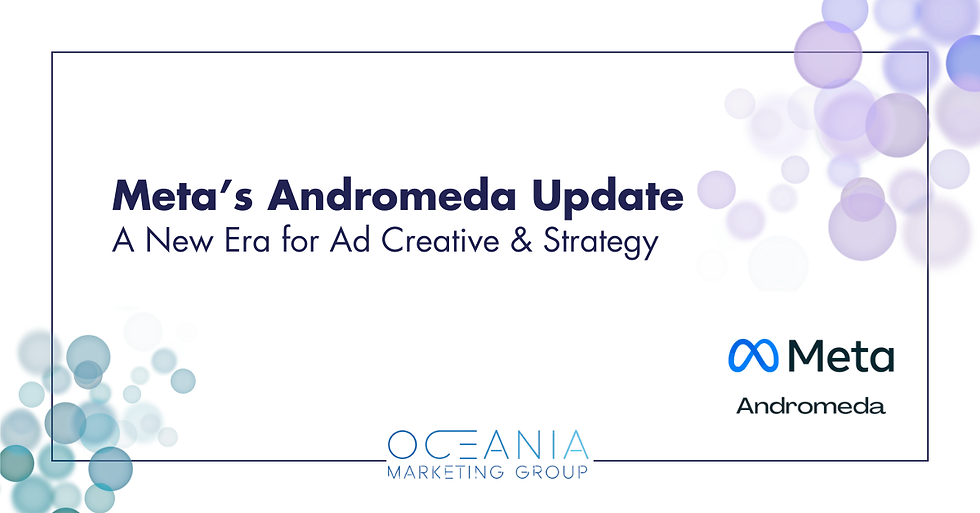Harnessing the Power of Data: Unveiling the Difference Between First, Second, and Third-Party Data
- Karen Lewis
- Sep 10, 2023
- 3 min read
Updated: Sep 14, 2023

In today's data-driven marketing landscape, success hinges on the ability to collect, analyse, and leverage various types of data. Among the most crucial distinctions are first-party, second-party, and third-party data. Understanding the differences between these data sources and knowing how to use them effectively is essential for any marketer looking to make data-driven decisions and drive successful campaigns.
First-Party Data: Your Goldmine of Insights
First-party data is the most valuable and reliable source of information for any business. It consists of data directly collected from your customers or users. This includes information such as:
Customer Behaviour: Insights into how customers interact with your website, products, or services.
Demographics: Information about your customers' age, gender, location, and more.
Purchase History: Records of past transactions and buying habits.
Feedback and Surveys: Customer opinions and feedback collected through surveys, reviews, or direct interactions.
Why is First-Party Data Critical?
First-party data offers several advantages:
Accuracy and Reliability: Since it comes directly from your audience, it's highly accurate and reliable.
Customisation: You can tailor marketing campaigns based on real customer behaviours and preferences.
Loyalty and Retention: Use first-party data to strengthen customer relationships and enhance retention strategies.
Capturing and Leveraging First-Party Data
There are various tools and platforms to capture first-party data:
Google Analytics: Tracks website interactions and user behaviour.
Customer Relationship Management (CRM) Systems: Stores customer information and interactions.
Email Marketing Platforms: Collects data through sign-up forms and email interactions.
Customer Surveys and Feedback Forms: Gathers opinions and preferences.
Example use case: Personalised Email Marketing
Use first-party data to segment your email list and send personalised content, product recommendations, and offers based on customer behaviour and preferences. For instance, if a customer frequently purchases fitness products, you can send them tailored fitness-related content and promotions.
Second-Party Data: Partnering for Insights
Second-party data is data that another company collects and shares with you through a mutual agreement. It's essentially someone else's first-party data that aligns with your target audience. For example, if you sell outdoor equipment, partnering with a camping blog for their user data can provide valuable insights.
Why is Second-Party Data Critical?
Expanded Audience Insights: Access to data from trusted partners can help you understand and reach a broader audience.
Cross-Promotion: Collaborate with partners to create co-marketing campaigns that benefit both parties.
Capturing and Leveraging Second-Party Data
Establish partnerships with companies that share a similar target audience.
Use Data Management Platforms (DMPs) to organise and integrate second-party data into your marketing efforts.
Example use case: Cross-Promotional Campaigns
Suppose you partner with a travel website for second-party data. In that case, you can create joint marketing campaigns, such as offering exclusive travel deals to your outdoor equipment customers who visit the partner's website for travel information.
Third-Party Data: Expanding Horizons
Third-party data is data collected by external sources, not directly from your customers. It's often purchased from data providers and includes a wide range of information, such as demographic data, interests, and behavioural data.
Why is Third-Party Data Critical?
Scale: Access to vast datasets can help you reach a broader audience.
Enhanced Targeting: Use third-party data to identify and target potential customers who fit your ideal customer profile.
Capturing and Leveraging Third-Party Data
Utilise data providers like Acxiom, Experian, or BlueKai.
Integrate third-party data with your CRM or DMP for more comprehensive audience insights.
Example use case: Lookalike Audiences for Social Advertising
Suppose you're running a social media advertising campaign. In that case, you can use third-party data to create lookalike audiences that resemble your existing customer base. This expands your reach to potential customers who share characteristics with your most valuable customers.
In today's marketing landscape, data is a powerful tool for understanding your audience, tailoring your campaigns, and achieving marketing success. The distinction between first, second, and third-party data is critical, as each offers unique advantages and use cases. By effectively capturing and leveraging these data sources, marketers can create more personalised, targeted, and successful campaigns that resonate with their audience and drive business growth. #datadrivenmarketing #data #firstpartydata #digitalmarketing




Comments